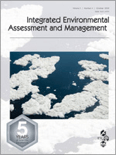
Integrated Environmental Assessment and Management
Scope & Guideline
Pioneering rigorous research at the intersection of geography and environmental science.
Introduction
Aims and Scopes
- Ecological Risk Assessment:
The journal emphasizes methodologies for assessing ecological risks posed by chemicals, pollutants, and other anthropogenic activities on ecosystems, focusing on the development and application of frameworks that integrate ecological and exposure data. - Sustainability and Life Cycle Assessment:
A significant focus is placed on sustainability assessments using life cycle analysis (LCA) to evaluate the environmental impact of products and processes, particularly in relation to chemical management and resource recovery. - Pollution and Contamination Management:
The journal addresses various aspects of pollution, including the assessment, management, and remediation of contaminated sites, with a particular emphasis on emerging contaminants such as PFAS and microplastics. - Interdisciplinary Approaches:
It promotes interdisciplinary research that incorporates ecological, social, and economic dimensions in environmental assessments, recognizing the complexity of environmental issues and the need for comprehensive solutions. - Climate Change and Environmental Resilience:
Research on the impacts of climate change on ecosystems and the development of adaptive management strategies to enhance resilience against climate-related stressors is a core area of focus.
Trending and Emerging
- Emerging Contaminants Research:
There is a significant increase in studies focusing on emerging contaminants, such as PFAS and microplastics, examining their environmental impact, exposure pathways, and management strategies. - Integration of Indigenous Knowledge:
Recent publications emphasize the importance of integrating Indigenous knowledge and perspectives into environmental assessments, acknowledging the value of traditional ecological knowledge in managing natural resources sustainably. - Machine Learning and Data-Driven Approaches:
The use of machine learning and advanced data analytics for environmental modeling and risk assessment is on the rise, reflecting a trend towards leveraging technology to improve the precision and efficiency of environmental assessments. - Climate Change Adaptation Strategies:
Research on adaptive management strategies to address climate change impacts is increasingly prominent, with a focus on resilience-building measures for ecosystems and communities. - Holistic and Multidisciplinary Frameworks:
There is a growing trend towards using holistic frameworks that combine ecological, economic, and social dimensions in environmental assessments, promoting integrated approaches to sustainability and management.
Declining or Waning
- Traditional Chemical Risk Assessment:
There has been a noticeable decline in publications focusing solely on traditional chemical risk assessment methods without integrating newer, more holistic approaches like weight-of-evidence and probabilistic modeling. - Historical Case Studies:
Research centered on historical case studies of environmental incidents, while still relevant, has diminished as the journal shifts towards more proactive and predictive assessments rather than retrospective analyses. - Single-Species Assessments:
The focus on single-species assessments is waning as the journal increasingly emphasizes ecosystem-level assessments and the interactions between multiple species and environmental stressors. - Regulatory Compliance Studies:
There is a noticeable decrease in studies that predominantly focus on compliance with existing regulations, as more researchers are looking to innovate and propose new frameworks rather than simply assess adherence to current standards. - Localized Environmental Impact Studies:
Research that addresses localized environmental impacts without broader implications or connections to global environmental challenges is becoming less frequent, reflecting a trend towards more integrative and comprehensive assessments.
Similar Journals
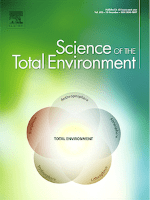
Science of The Total Environment
Connecting Science and Sustainability for a Better TomorrowScience of The Total Environment, an esteemed journal published by Elsevier, holds a significant position in the field of environmental science, encompassing critical areas such as Environmental Chemistry, Environmental Engineering, Pollution, and Waste Management and Disposal. With an impressive impact factor and ranked in the Q1 quartile across its categories for 2023, the journal is recognized for its high-quality research output and contribution to environmental sustainability. Operating from its base in the Netherlands, the journal has been a valuable resource since its inception in 1972, welcoming innovative studies that address complex environmental challenges. Its notable rankings—such as Rank #9 in both Environmental Sciences and Pollution—underscore its relevance and influence in the academic community. Although the journal currently does not provide an open access option, the robust findings and discussions presented within its pages continue to foster a deeper understanding of environmental issues. Science of The Total Environment is an essential platform for researchers, professionals, and students dedicated to advancing knowledge and solutions in the rapidly evolving field of environmental science.
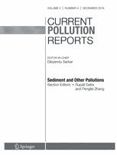
Current Pollution Reports
Illuminating the Path to Pollution MitigationCurrent Pollution Reports, published by Springer Heidelberg, is an esteemed journal in the field of environmental science, focusing on the multifaceted aspects of pollution, waste management, and water science. With an impressive 2023 impact factor reflected in its status as a Q1 journal across multiple categories—including Management, Monitoring, Policy and Law, Pollution, Waste Management and Disposal, and Water Science and Technology—this journal stands at the forefront of environmental research and policy discourse. The journal, which has been in publication since 2015, aims to provide a platform for scholars and practitioners to share their findings, promoting the exchange of innovative ideas and effective solutions to pressing environmental challenges. With its rigorous peer-review process, Current Pollution Reports serves as an invaluable resource for researchers, professionals, and students committed to understanding and addressing pollution and its impacts on our planet.
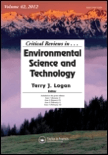
CRITICAL REVIEWS IN ENVIRONMENTAL SCIENCE AND TECHNOLOGY
Fostering Critical Discourse for a Greener TomorrowWelcome to CRITICAL REVIEWS IN ENVIRONMENTAL SCIENCE AND TECHNOLOGY, an esteemed journal published by Taylor & Francis Inc. This journal has been at the forefront of environmental research since its inception in 1993, spanning a wide range of disciplines including environmental engineering, pollution control, waste management, and water science. CRITICAL REVIEWS holds an impressive Q1 ranking in multiple categories, including Environmental Engineering and Pollution, demonstrating its critical role in advancing knowledge within the field. With a remarkable Scopus ranking—placing it in the top 1% for Environmental Science categories—this journal serves as an invaluable resource for researchers, professionals, and students alike, providing comprehensive reviews and analyses that catalyze innovative solutions to pressing environmental challenges. Though currently not open access, the journal's content is accessible through various academic platforms, ensuring that cutting-edge research is available to a global audience. Join the community of scholars dedicated to enhancing our understanding of environmental science and technology through rigorous investigation and critical discourse.

Challenges in Sustainability
Unraveling Complexities in Ecology and Environmental ManagementChallenges in Sustainability, published by LIBRELLO PUBLISHING HOUSE in Switzerland, is a preeminent Open Access journal dedicated to advancing knowledge in the fields of sustainability, ecology, and environmental management. With its ISSN 2297-6477, this journal has been pivotal since its inception in 2013, providing a platform for innovative research and discourse on sustainable practices and policies. The journal currently holds a Q2 ranking in notable categories such as Ecology, Geography, Planning and Development, and Nature and Landscape Conservation, reflecting its significant contribution to these critical areas. Access options are freely available to foster a wider dissemination of knowledge, engaging researchers, professionals, and students alike. As the world grapples with pressing environmental challenges, Challenges in Sustainability serves as an essential resource for those seeking to address complex sustainability issues through interdisciplinary research and informed policy advocacy.
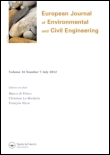
European Journal of Environmental and Civil Engineering
Exploring Interdisciplinary Approaches to Environmental ChallengesThe European Journal of Environmental and Civil Engineering, published by Taylor & Francis Ltd, is a prestigious peer-reviewed journal that serves as a vital platform for advancing knowledge in the fields of Civil and Structural Engineering as well as Environmental Engineering. With an impressive impact factor and categorized in the Q2 quartile for both engineering fields, this journal occupies a significant position in the scholarly community. Its focused scope encompasses innovative research, case studies, and practical applications that address contemporary environmental and infrastructural challenges. Researchers, professionals, and students alike benefit from the journal's commitment to high-quality discourse, as evidenced by its Scopus rankings, which place it in the top 30% in Civil and Structural Engineering and the top 40% in Environmental Engineering. Through the publication of cutting-edge studies and a commitment to fostering interdisciplinary dialogue, the European Journal of Environmental and Civil Engineering remains an essential resource for those dedicated to improving our built environment and safeguarding our natural resources.
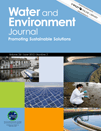
WATER AND ENVIRONMENT JOURNAL
Shaping sustainable practices through rigorous research.WATER AND ENVIRONMENT JOURNAL is a prominent interdisciplinary journal dedicated to the latest research and advancements in the fields of water resources, environmental engineering, and pollution management. Published by WILEY, the journal has established itself as an essential resource for academics, practitioners, and policymakers since its inception in 1987. With an impressive impact factor reflecting its robust influence, it ranks in the Q2 and Q3 quartiles across multiple categories, including Water Science and Technology, Environmental Engineering, and Management, Monitoring, Policy and Law. The journal welcomes high-quality research articles, reviews, and case studies that address the critical challenges facing water and environmental sciences. As an open access publication, it provides a platform for widespread accessibility and engagement, ensuring that the knowledge generated is disseminated to a diverse audience. With a commitment to advancing understanding and solutions in water-related issues, WATER AND ENVIRONMENT JOURNAL plays a crucial role in shaping the future of environmental research and technology.

Journal of Environmental Informatics
Transforming environmental challenges through innovative informatics.The Journal of Environmental Informatics, published by the International Society for Environmental Informatics, serves as a leading academic platform dedicated to advancing the interdisciplinary field of environmental informatics. With an ISSN of 1726-2135 and an E-ISSN of 1684-8799, this esteemed journal is based in Canada and reaches a global audience of researchers, professionals, and students alike. As a testament to its high academic standards, the journal has achieved a Q1 ranking in key categories such as Computer Science Applications, Decision Sciences, and Environmental Science for the year 2023, positioning it within the top tier of its field. Additionally, its impressive Scopus rankings reflect its influence and reach within the academic community, ranking #16 in General Environmental Science and #6 in General Decision Sciences. Covering crucial topics from environmental data management to decision-support systems tailored for sustainability practices, the Journal aims to disseminate innovative research that transforms the way environmental challenges are addressed. While it operates under traditional access categories, this journal invites contributions that enhance our understanding and application of informatics within environmental science, making it an invaluable resource for anyone invested in these pressing global issues.

Archives of Environmental Protection
Exploring Solutions for Environmental ChallengesArchives of Environmental Protection, published by the Polish Academy of Sciences, is a pivotal journal in the field of Environmental Science. With an ISSN of 2083-4772 and E-ISSN of 2083-4810, this journal serves as a critical platform for disseminating innovative research and comprehensive reviews that address the complexities surrounding environmental issues. As of 2023, it holds a respectable Q3 ranking in Environmental Science, reflecting its relevance and contribution to the academic community, indicated by a Scopus rank of 124 out of 233 in the General Environmental Science category. Although it operates without Open Access, the journal's consistent publication from 2007 to 2024 emphasizes its commitment to advancing knowledge in diverse areas of environmental protection. Researchers, professionals, and students are encouraged to engage deeply with the wealth of insights offered through the rigorous peer-reviewed articles presented in this journal, which strive to foster sustainable practices and environmental stewardship.

BULLETIN OF ENVIRONMENTAL CONTAMINATION AND TOXICOLOGY
Illuminating the path to safer, cleaner environments.BULLETIN OF ENVIRONMENTAL CONTAMINATION AND TOXICOLOGY, published by SPRINGER, is a pivotal journal in the fields of Environmental Science, Toxicology, and Public Health. With a strong history of dissemination since its inception in 1966, the journal predominantly focuses on the latest advances in understanding environmental contaminants and their toxicological effects on health and ecosystems. It currently holds a respectable Q2 ranking across multiple categories including Health, Toxicology and Mutagenesis, Medicine (miscellaneous), and Pollution, as per the 2023 metrics. While the journal is not Open Access, it provides an invaluable platform for researchers, professionals, and students seeking to contribute to and stay informed on critical issues regarding environmental hazards and their implications. With an engaged community of scholars and practitioners, this journal continues to be an essential resource for addressing the pressing challenges of environmental contamination and its health impacts, guiding future research and policy decisions.
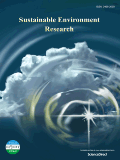
Sustainable Environment Research
Advancing sustainability through innovative research.Sustainable Environment Research, an esteemed journal published by BMC, serves as a pivotal platform for disseminating innovative research in the fields of Environmental Engineering, Pollution, and Renewable Energy. Established in 2016 as an Open Access journal, it facilitates the widespread sharing of knowledge and advancements across the globe, reflecting its commitment to enhancing environmental sustainability. With an impressive Q1 ranking in multiple categories, including Water Science and Technology and Pollution, the journal is recognized for its significant impact, currently holding a rank of 31st in Environmental Science - Water Science and Technology. The journal actively invites researchers, professionals, and students to contribute to crucial discussions around sustainable practices and technologies, thus addressing worldwide environmental challenges. Based in Taiwan but accessible internationally, Sustainable Environment Research provides a valuable resource for those dedicated to advancing the science of sustainability.